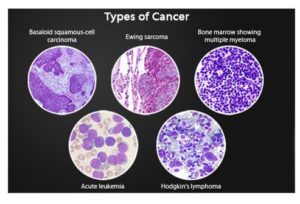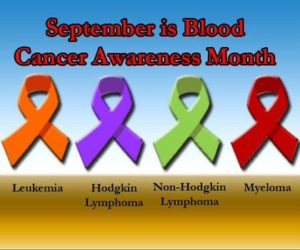Lets just start with our type of cells in the body first that would help us better understand these names in their meaning and understand what gets effected immediately when types of cells are not in normal levels.
We have red blood cells in our blood stream and abbreviated RBCs. Their substance in them are rich in hemoglobin, an iron-containing bio-molecule. They are also known as erythrocytes. They also are the food carrier of oxygen (02) carried in our body from tissue to tissue. This is done via the heart by its pumping action. RBCs are sent throughout the bloodstream from our heart. In time sent back to the heart when all the 02 is used up by the tissues it reached. Then sent to the lungs from the right side of the heart to get more 02 rich supply in the cell. The lungs take from the cell the carbon dioxide (a toxin from the cell) that we release via exhaling from the lungs. The cell goes to the left side of the heart pumping the RBCs back out in the blood stream to release this 02 (energy)to our tissues to stay alive repeating this cycle over andl over again. till that RBC dies. Without 02 to our tissues means death.
We have white blood cells. White blood cells (also called leukocytes for WBCs in general and abbreviated as WBCs) are the cells of the immune system that are involved in protecting the body, they fight infection.
White blood cells (leukocytes) are the cells of the immune system that are involved in protecting the body against both infectious disease and foreign invaders but their are types of WBCs. All white blood cells are produced and derived from multipotent cells in the bone marrow known as hematopoietic stem cells. Leukocytes are found throughout the body, including the blood and lymphatic system (lymph nodes).
Types of white blood cells
-
Monocytes. They have a longer lifespan than many white blood cells and help to break down bacteria.
-
Lymphocytes. They create antibodies to defend against bacteria, viruses, and other potentially harmful invaders.
-
Neutrophils. They kill and digest bacteria and fungi. They are the most numerous type of white blood cell and your first line of defense when infection strikes.
-
Basophils. These small cells appear to sound an alarm when infectious agents invade your blood. They secrete chemicals such as histamine, a marker of allergic disease, that help control the body’s immune response.
-
Eosinophils. They attack and kill parasites, destroy cancer cells, and help with allergic responses.
Both red blood and white blood cells have what is called a nucleus inside them meaning it stores the cell’s hereditary material, or DNA, and it coordinates the cell’s activities, which include growth, intermediary metabolism, protein synthesis, and reproduction (cell division). In addition, cancer cells often have an abnormal shape, both of the cell, and of the nucleus (the “brain” of the cell.) The nucleus appears both larger and darker than normal cells. The reason for the darkness is that the nucleus of cancer cells contains excess DNA.
Platelet cells (also called thrombocytes are a component of blood whose function (along with the coagulation factors) is to react to bleeding from blood vessel injury by clumping, thereby initiating a blood clot. The main function of platelets is to contribute to hemostasis: the process of stopping bleeding at the site in the body anywhere. Platelets are considered “not a true cell” because of its make up and doesn’t have a nucleus in it like RBCs or WBCs.
Where do all our cells derive from? The bone marrow, in adult humans bone marrow is primarily located in the ribs, vertebrae, sternum, and bones of the pelvis. On average, bone marrow constitutes 4% of the total body mass of humans.
In the bone marrow the formation of blood cellular components happens. All cellular blood components are derived from haematopoietic stem cells. The formation of blood cellular components.
When these cells get affected with being increased or decreased in the bloodstream especially changing make up of the cell (Ex. cancer cell) then the person is at risk for problems that can occur if not resolved in the near future.
Multiple myeloma, lymphoma, and leukemia
These are all types of cancers that effect your WBCs and immunity system. Doctors often call them blood cancers. The cells that are effected are WBC’s and after the cancer cells start intially effecting WBC’s affects the other cells.
While these three types of cancers are alike in some ways (all three deals with intially affecting WBCs and our immune system) but they affect different parts of your body. Some are harder to treat than others.
Multiple myeloma hits your plasma cells. Multiple myeloma is a cancer that forms in a type of white blood cell called a plasma cell. These white blood cells make antibodies to fight disease. Myeloma cancer cells take over, and your body can’t fight infections like they did when your good WBCs where in normal level. Remember all cancer cells keep replicating in the bone marrow (Where our cells are made from normally).
They take over eliminating the plasma normal cells allowing cancer cells to take over. In addition, cancer cells often have an abnormal shape, both of the cell, and of the nucleus (the “brain” of the cell.). The nucleus appears both larger and darker than normal cells nucleus (RBCs and WBCs). The reason for the darkness is that the nucleus of cancer cells contains excess DNA.
The cancer cells make abnormal antibodies that settle in your blood not allowing the regular function of regular plasma cells being done (fighting infection off). Instead cancer cells do the opposite. They can eat away at bone or damage your kidneys in this disease.
Symptoms
- Bone pain, especially in your chest or spine
- Confusion
- Constipation
- Extreme thirst
- Fatigue
- Nausea
- No appetite
- Weakness or numbness
- Weight loss you can’t explain
Stay tune for Part II tomorrow. Its the awareness month of blood cancers!

